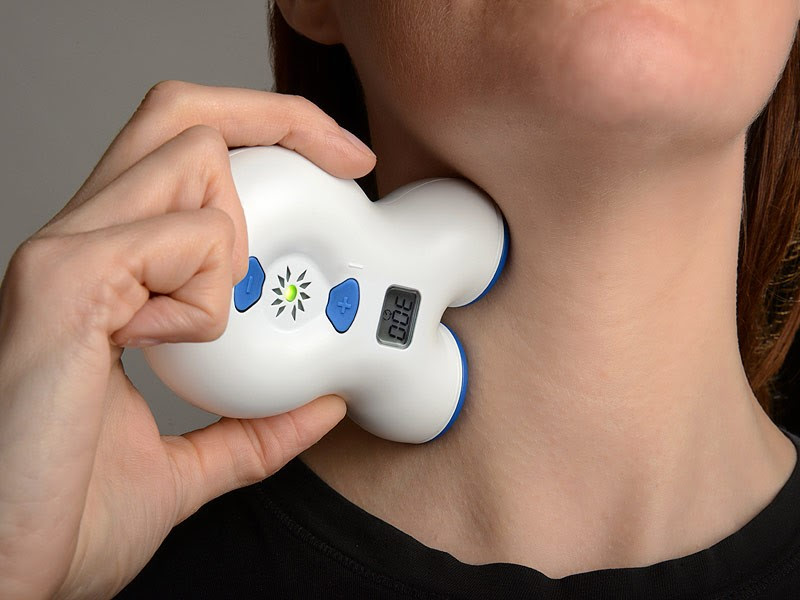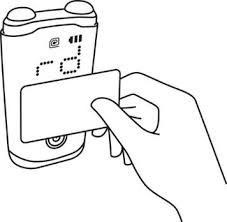Is Stimulating Vagus Nerve The Next Hottest Health Trend?

If you’ve been reading my articles for a while, you’re already pretty familiar with the benefits of vagus nerve stimulation (VNS).
But in case you need a little refresher: The vagus nerve is the longest nerve in your body—stretching from the bottom of the brain stem, down through the torso, and ending at the abdomen. It touches nearly every major organ and bodily system. And stimulating the vagus nerve unleashes a wide array of healing benefits.
Having personally studied this fascinating nerve for decades now, and seeing first-hand what it’s capable of, I predict it’s only a matter of time before a flood of handheld, at-home vagus nerve stimulation (VNS) devices hit the shelves.
They’ll claim to heal an array of ailments—from migraines to pain and even depression. And they won’t be cheap.
How can I be so sure?
I’ve been following the science—and the money.
New studies on therapeutic uses for VNS are being published nearly every week now. Of course, I’m ecstatic that this simple, natural technique is finally getting the credit it deserves!
The problem is, all this attention translates to dollar signs in the eyes of Big Pharma, which is already working to capitalize on the healing abilities of VNS.
So today, I’m going to reveal what you really need to know about at-home VNS devices, why you should proceed with caution before investing in one…and how you can tap into the healing powers of the vagus nerve without spending a single cent.
The truth about “revolutionary” VNS devices
First, let me tell you a little bit about these new VNS devices.
Currently, doctors are prescribing them to help treat patients who suffer from chronic pain, cluster headaches, migraines, and depression.
To get the full picture, let’s take a look at a product description from one of the more popular brands:
“Designed as a portable, easy-to-use technology, [name withheld] can be self-administered by patients, as needed, without the potential side effects associated with commonly prescribed drugs. When placed on a patient’s neck over the vagus nerve, [name withheld] stimulates the nerve’s afferent fibers, which may lead to a reduction of pain in patients.”

An example of a handheld VNS device.
IMAGE SOURCE: Medscape.com
Sounds pretty great, right?
I decided to do a little digging to see how prescriptions for these devices really work.
Turns out, there’s a catch. A real big one…
If your insurance doesn’t cover it, the device costs $598!
And get this… Apparently the device runs out of charge every 31 days and needs to be “refilled.”
According to the company’s customer support team, the device can only be “refilled” with a scannable card that costs the same amount as the device itself.

The scannable refill cards for a popular VNS device.
IMAGE SOURCE: gammacore.com
So if you’re using the device for a chronic, ongoing issue, you’re on the hook for upwards of over $7,000 a year!
Now, I have no doubt some people have found these types of devices helpful. But it’s sort of like they’ve been conned into a buying a Rolls Royce when all they really need is a trusty pickup truck.
People don’t need to be taken advantage of, especially when an equally effective solution already exists.
Because here’s the thing: This pricey gadget offers the same exact benefits I talk about every single week.
Try DIY VNS instead
The undeniable fact is that VNS provides a wide range of impressive health benefits. Research shows that it can help protect against Alzheimer’s, reduce pain, ease anxiety and panic attacks, alleviate stress, promote better sleep, build better lung capacity, improve concentration, and speed up the body’s ability to heal… I could go on and on. (If you want to learn more, just keep browsing this website).
But you don’t have to break the bank to find relief or improve your health.
Instead, you can rely on an all-natural, centuries-old, completely FREE technique: Your voice.
Here’s how to prescribe yourself a healing “dose” of VNS, using the healing effects of self-generated sound.
Vagus nerve exercise: How to Stimulate the Vagus Nerve with Sound
Set a timer for two minutes.
1. Take a slow, deep breath inward through your nose.
2. With your mouth closed, exhale through your nose, while simultaneously making a humming sound. Do this for as long as your exhalation.
3. Repeat this humming cycle for 2 minutes. Be sure to take breaks as needed.
Here’s what it should sound like.
And if you get dizzy or light-headed, stop immediately.
When you’re finished, take a moment to notice how you feel.
Do you feel calmer? Can you think more clearly? Is your pain "lighter"?
Remember, you had the ability to bring these positive changes to your present moment whenever you want—all by stimulating the vagus nerve and activating your body’s built-in healing systems.
To feel the effects more deeply, I recommend gradually working your way up to 10 minutes of humming.
Of course, if you find you’d like to hum for longer, go for it!
Don’t fret if you don’t feel any benefits the first time you try. Sometimes it takes your body a few repetitions to get used to the new sensation.
And if you’re interested in incorporating the power of all-natural VNS into your everyday health regimen, I’ve got just the thing for you…
Today you can get my Sound Solution Bundle for only $39.
Sound Solution is a seven part guided audio and video where I introduce you to the most powerful sound-based techniques for optimal health—both mentally and physically.
But don’t worry—as powerful as the techniques that I’ll teach you are, I like to keep things fun and easy.
Click here to learn more about getting your discounted Sound Solution Bundle with a 100% money back and satisfaction guarantee.
FDA Compliance: The information on this website has not been evaluated by the Food & Drug Administration or any other medical body. We do not aim to diagnose, treat, cure or prevent any illness or disease. Information is shared for educational purposes only. You must consult your doctor before acting on any content on this website, especially if you are pregnant, nursing, taking medication, or have a medical condition.
The material provided on this site is for educational purposes only and any recommendations are not intended to replace the advice of your physician. You are encouraged to seek advice from a competent medical professional regarding the applicability of any recommendations with regard to your symptoms or condition.
Copyright © 2022 by Blue Beat Media. Thank you for your interest in Jim Donovan / Jim Donovan Music. We do not allow republication of our full newsletters and articles. However, you can post a portion (no more than 90 words, 1-2 paragraphs) of our content with a live link back to our homepage, donovanhealth.com, or a link to the specific article you are quoting from.
About the author:
Jim Donovan M.Ed. is a multi-platinum musician, educator and TEDx speaker.
His mission is to share the restorative power of music through education and performance.
Donovan is an Assistant Professor and Director of Music and Wellness at Saint Francis University.
His viral TEDx Talk "How to Trick Your Brain Into Falling Asleep" has been viewed over 6 million times to date.
He currently performs with his band The Sun King Warriors who can best described as as a blend of rhythm heavy roots rock, with a strong dose of big barreling drums.
Jim Donovan got his start as a founding member of the multi-platinum selling band Rusted Root.
There he co-wrote the song “Send Me on My Way” featured in the movies "Ice Age", "Matilda" and the Netflix series "New Girl".
During his time with the band 1990-2005, he recorded and released seven full length albums. Including "When I Woke" (3x platinum).
He also had the honor of sharing the stage with many of his musical influences and heroes including Robert Plant and Jimmy Page of Led Zeppelin (1995 US/UK tour), Carlos Santana (1997/2002 US tour), The Allman Brothers Band (1995/96 US tour), The Grateful Dead (1995 Three Rivers Stadium in Pittsburgh, PA) and many others.
Send Me On My Way also became the first song on Mars where it “woke up” NASA’s Mars Rover.


